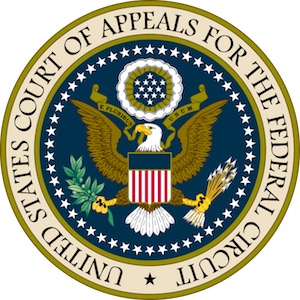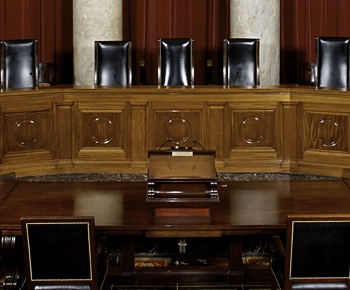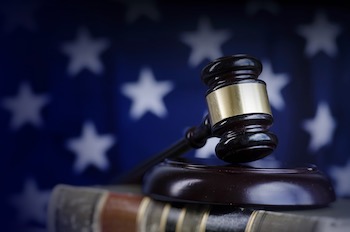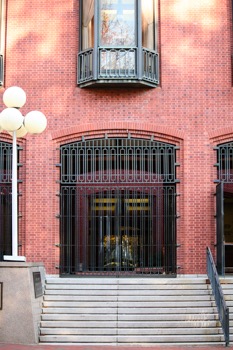Software Patentability 2017
Today, most computer innovations relate to software, at least in some important ways, and the USPTO continues to issue at least some patents for software-related inventions. No one seriously believes software will become patent ineligible per se, although it is undeniable that there is now a much steeper hill to climb than there once was. The trick is to define the invention as providing a technological solution to a technological problem. See A Guide to Software Patents and Software Patent Eligibility at the Federal Circuit.
For now, there has been no definitive statement by the Supreme Court that software is, in fact, patent eligible, although the Court has recognized at least some software-related innovation as being patent eligible. See Diamond v. Diehr. The Supreme Court also continues to consider the invention at issue in State Street Bank to be patent eligible, even if the “useful, concrete and tangible result” test does not live on.
Federal Circuit says automating 3D-animation method is patent eligible
 The Federal Circuit recently issued a decision in McRo, Inc. v. Bandai Namco Games America, which found that the software patent claims at issue were not directed to an abstract idea and were patent eligible.
The Federal Circuit recently issued a decision in McRo, Inc. v. Bandai Namco Games America, which found that the software patent claims at issue were not directed to an abstract idea and were patent eligible.
The patents in question related to automating a part of a 3D-animation method. Essentially, the patents cover lip synchronization of animated characters so that the lips of the animated character move in a normal fashion to the point where the animated character’s lips can be read.
After going through a two-plus page recitation of the law, Judge Reyna summarized the district court holding, that the claims were drawn to an abstract idea of automating rules-based use of morph targets and delta sets for lip synchronization in 3D animation. Reyna explained that the Federal Circuit disagreed with that determination, reminding the district court that they have cautioned courts to carefully “avoid oversimplifying the claims.” Reyna would go on to say that these claims are specifically “limited to rules with specific characteristics.”
09.27.16 | Federal Circuit Cases, Patent Issues, posts, section 101, software patents | Gene Quinn
SCOTUS refuses to take Sequenom v. Ariosa
 On June 27, 2016, the United States Supreme Court denied certiorari to Sequenom, Inc., which will let stand a decision of the United States Court of Appeals for the Federal Circuit that ruled a truly revolutionary medical test to be patent ineligible.
On June 27, 2016, the United States Supreme Court denied certiorari to Sequenom, Inc., which will let stand a decision of the United States Court of Appeals for the Federal Circuit that ruled a truly revolutionary medical test to be patent ineligible.
The innovation in question is a test for detecting fetal genetic conditions in early pregnancy that avoided dangerous, invasive testing techniques that are potentially harmful to both the mother and the fetus.
The invention, which was embodied in U.S. Patent No. 6,258,540, claimed certain methods of using cffDNA. The patent teaches technicians to take a maternal blood sample, keep the non-cellular portion (which was “previously discarded as medical waste”), amplify the genetic material that only the inventors had discovered was present, and identify paternally inherited sequences as a means of distinguishing fetal and maternal DNA. The claimed method does not preempt other demonstrated uses of cffDNA.
Why courts rely on §101 when other sections of the statute seem far better suited
 Diamond v. Diehr specifically warned about §102 improperly influencing the §101 analysis, so a §101 analysis was presumably considered separate from a §102, §103 or §112 analysis. Fast forward a little more than a generation. In 2012, Mayo Collaborative Services v. Prometheus Laboratories, Inc. was decided by the Supreme Court, which appeared to disregard the warning of Diamond v. Diehr.
Diamond v. Diehr specifically warned about §102 improperly influencing the §101 analysis, so a §101 analysis was presumably considered separate from a §102, §103 or §112 analysis. Fast forward a little more than a generation. In 2012, Mayo Collaborative Services v. Prometheus Laboratories, Inc. was decided by the Supreme Court, which appeared to disregard the warning of Diamond v. Diehr.
Mayo v. Prometheus addressed the question of whether two patents concerning the use of thiopurine drugs to treat autoimmune diseases satisfied the §101 requirement. The Supreme Court ended up holding that the patents were invalid under §101. But its reasoning confused many patent practitioners and litigators. Justice Breyer, writing for a unanimous Court, stated that, because the steps of “administering” and “determining” were well known and conventional, they were not patent-eligible subject matter. This analysis seems to combine the requirement of patent eligibility with that of novelty and nonobviousness. In other words, in Mayo, the Supreme Court did a corollary of what it specifically warned against doing in Diehr.
06.29.16 | patent eligibility, Patent Issues, section 101, Supreme Court Cases | Gene Quinn
Federal Circuit finds data storage software claims patent eligible
 Several weeks ago, the United States Court of Appeals for the Federal Circuit shook up the patent world with a somewhat unexpected gift for patent owners, particularly patent owners and applicants seeking software patents. The Court issued an important decision on software patent eligibility in Enfish LLC v. Microsoft.
Several weeks ago, the United States Court of Appeals for the Federal Circuit shook up the patent world with a somewhat unexpected gift for patent owners, particularly patent owners and applicants seeking software patents. The Court issued an important decision on software patent eligibility in Enfish LLC v. Microsoft.
The opinion by Judge Hughes, who was joined by Judge Moore and Judge Taranto, doubles the total of Federal Circuit decisions where claims in a software patent were deemed to be patent eligible because they are not abstract. In other words, DDR Holdings is no longer the only point of hope for innovators and patent owners in the software space.
This case stared when Enfish sued Microsoft for patent infringement. The patents at issue were U.S. Patent No. 6,151,604 and U.S. Patent No. 6,163,775, both issued in late 2000 and both claiming priority to the same application filed in March 1995. The ’604 and ’775 patents are directed to an innovative logical model for a computer database. A logical model is a model of data for a computer database explaining how the various elements of information are related to one another. Contrary to conventional logical models, the patented logical model includes all data entities in a single table, with column definitions provided by rows in that same table. The patents describe this as the “self-referential” property of the database.
06.3.16 | CAFC, Patent Issues, section 101, software patents | Gene Quinn


No Comments
02.24.17 | patent eligibility, section 101, software patents | Gene Quinn